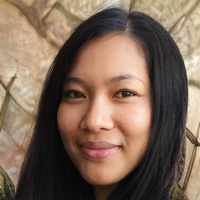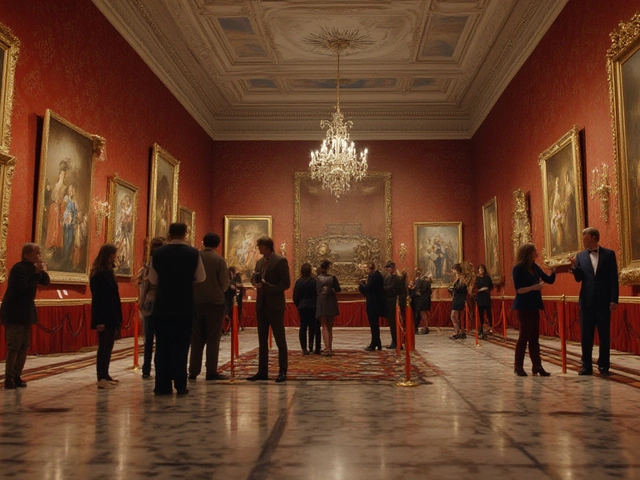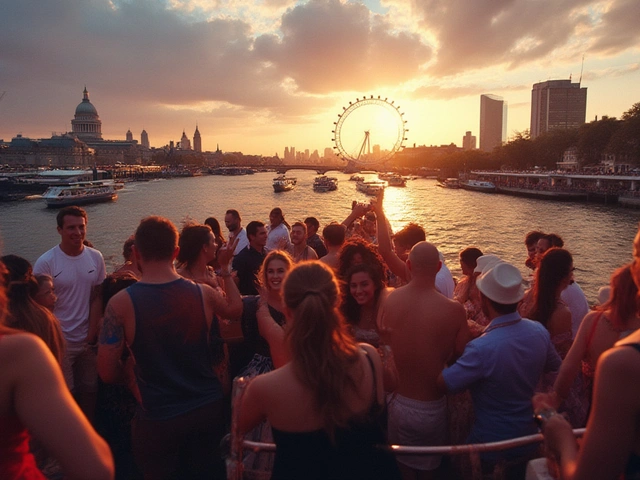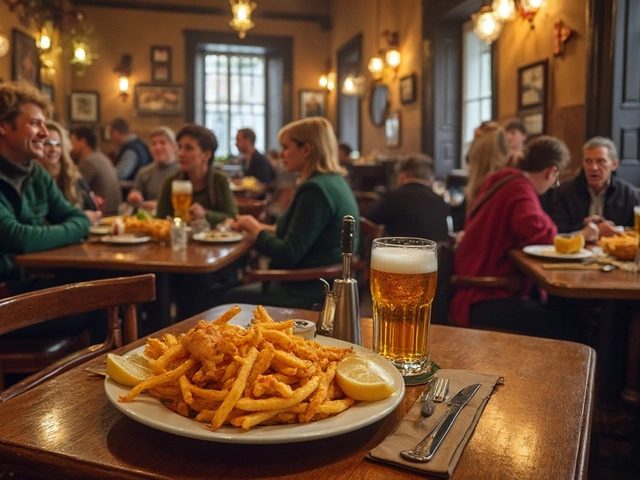In London, few places carry as much weight as the Tower of London. Standing on the north bank of the Thames, just a stone’s throw from Tower Bridge and the Shard, it’s not just another historic site-it’s the beating heart of England’s royal past. While tourists line up for selfies with the Beefeaters, locals know this isn’t just a museum. It’s where kings were imprisoned, queens were executed, and the Crown Jewels have been guarded for over 700 years. This isn’t a story of stone and steel alone-it’s the story of how a fortress built to intimidate became one of London’s most enduring symbols.
From Norman Stronghold to Royal Prison
William the Conqueror ordered the White Tower built in 1078, not to welcome visitors, but to remind the people of London who was in charge. The Normans had just won the Battle of Hastings, and the city was restless. The White Tower, made of Caen stone shipped from Normandy, was a visual scream of power. Its thick walls and narrow windows weren’t designed for light-they were built to withstand rebellion.
By the 13th century, Henry III expanded the site into a full fortress with inner and outer walls, a moat fed by the Thames, and a network of towers. The Bloody Tower, where the Princes in the Tower vanished in 1483, became infamous. Richard III was accused of ordering their murder, though no body was ever found. The Tower wasn’t just a palace-it was a prison for traitors, rivals, and anyone who threatened the crown. Sir Thomas More, Anne Boleyn, and even Guy Fawkes spent time here before their executions. The axe marks on Tower Green? Real. The bloodstains? Debated. But the fear? Undeniable.
The Crown Jewels: Why They’re Still Here
One of the biggest draws today is the Crown Jewels, housed in the Jewel House since 1967. The collection includes St. Edward’s Crown, used at every coronation since 1661, and the Imperial State Crown, worn by the monarch on the way to the State Opening of Parliament. The 530-carat Koh-i-Noor diamond? Once owned by Mughal emperors, then taken by the British East India Company, it’s now set in the Queen Mother’s crown. The jewels are guarded by armed soldiers, motion sensors, and a 24/7 surveillance system-but the tradition goes back centuries.
Before modern security, the Crown Jewels were kept in the Wakefield Tower. Thieves tried to steal them in 1671 when Colonel Thomas Blood and his gang disguised themselves as tourists, even trying to stuff the crown into a hollowed-out walking stick. They were caught, but King Charles II pardoned them. Why? Maybe because Blood was charming. Maybe because the king didn’t want to make a martyr. Either way, the jewels stayed. Today, you can see them under glass, lit by soft spotlights, with a Beefeater standing just a few feet away. The guards don’t move. They don’t blink. And you’re not allowed to get closer than two meters. It’s not just security-it’s theater.
The Beefeaters: More Than Costumes
When you see the red-and-gold uniforms of the Yeomen Warders, you might think it’s a tourist gimmick. It’s not. These are retired soldiers of the British Army, each with at least 22 years of service. To become a Beefeater, you need to have served in the Armed Forces with a clean record, and you must be appointed by the monarch. They live in the Tower with their families-some have been here for generations. Their job? Guard the Crown Jewels, give tours, and keep the ravens alive.
The ravens. Yes, the ravens. Legend says if the ravens leave the Tower, the kingdom will fall. That’s why there are always at least six ravens here, with a spare in case one flies off. Each raven has a name-Merlina, Jubilee, Harris-and a wing clipped to keep them grounded. The Ravenmaster, a Beefeater who tends to them daily, feeds them raw meat and even lets them roam the grounds. You’ll see them perched on the battlements, cawing at tourists, sometimes stealing a hat or a phone charger. Locals say if you see a raven fly over Tower Bridge, it’s a sign of good luck. Others say it’s just a bird. Either way, they’ve been here longer than most pubs in London.
The Tower Today: Between History and Tourism
Today, the Tower of London is managed by Historic Royal Palaces, the same charity that runs Hampton Court and Kensington Palace. It gets over 3 million visitors a year-more than the British Museum. But locals don’t come for the crowds. They come for the quiet moments. Early on a weekday morning, before the tour groups arrive, you can walk the battlements alone and hear the wind whistle through the gaps in the stone. On a clear day, you can see the Gherkin, the Walkie Talkie, and the Shard-all modern giants built on the same riverbank where kings once ruled.
There’s no entry fee for residents with a London Pass, and the Tower is just a five-minute walk from Tower Hill Tube station. Many Londoners bring visitors here after a Sunday roast at The George pub in nearby Wapping, or after a stroll along the South Bank. Some come on their lunch break, grabbing a sandwich from the nearby Borough Market and walking over for 20 minutes of history. It’s not a place you visit once. It’s a place you return to-when you want to remember what this city has survived.
What Makes the Tower Different From Other Castles?
Compare the Tower to Edinburgh Castle or Windsor. Those are grand, sprawling, with gardens and royal apartments. The Tower is tighter, darker, more brutal. It was never meant to be a home-it was a weapon. The medieval palace here had no windows facing the city. The royal chambers looked inward, toward the inner courtyard, not outward to the Thames. This wasn’t about comfort. It was about control.
And that’s why it still works today. You don’t just look at the Tower-you feel it. The cold stone. The narrow staircases. The echo of footsteps in the Bloody Tower. Even the gift shop feels different. No cheap plastic crowns here. Instead, you’ll find hand-bound books on Tudor history, replica Tudor coins, and jewelry made from gold mined in the same mines that supplied Henry VIII’s treasury.
Why It Still Matters to Londoners
London has changed. The Tube runs 24 hours. Netflix replaced the cinema. Craft beer has replaced bitter. But the Tower? It’s still here. It’s where the Queen’s funeral procession passed in 2022. It’s where the coronation procession began in 2023. It’s where the Mayor of London takes the oath of office every year.
For expats, it’s a rite of passage. For students at UCL or King’s College, it’s a weekend escape from essays. For businesspeople in Canary Wharf, it’s a reminder that power isn’t just in boardrooms-it’s in stone, in blood, in centuries of stories. The Tower doesn’t need flashy lights or VR headsets. It doesn’t need to be trendy. It just needs to be remembered.
Walk the ramparts. Listen to the ravens. Stand where Anne Boleyn took her last breath. And then, if you’re lucky, catch the sunset over the Thames from the moat wall. That’s when London feels most alive-not in the neon of Soho, not in the queues at Camden Market, but right here, where history doesn’t just live… it watches.
Can you visit the Tower of London for free?
No, you can’t visit the Tower of London for free. Entry requires a ticket, but London residents with a valid London Pass or Historic Royal Palaces membership get free access. Some local libraries offer free or discounted tickets through cultural schemes, and children under 16 enter free with a paying adult. It’s worth checking the Historic Royal Palaces website before you go-there are occasional free entry days for residents during Heritage Open Days in September.
Are the Crown Jewels real?
Yes, the Crown Jewels on display are real. They include over 140 objects, many dating back to the 17th century. The stones are authentic, though some have been replaced over time. The original St. Edward’s Crown was melted down after the English Civil War. The current version, made in 1661 for Charles II, uses gold and gemstones from the original. The Koh-i-Noor diamond, though controversial, is genuine and has been part of the British Crown since 1850.
How long should I spend at the Tower of London?
Plan for at least two to three hours if you want to see everything: the Crown Jewels, the White Tower, the Medieval Palace, the ravens, and the battlements. If you’re short on time, one hour is enough for a quick tour focused on the jewels and the Bloody Tower. Locals often spend 20 minutes just walking the walls at sunset. The audio tour is excellent and included in the ticket price-it’s narrated by a former Beefeater.
Can you see the Tower of London without going inside?
Yes, you can see the Tower of London from the outside for free. Tower Bridge, the South Bank, and the Thames Path offer great views. The best photo spot is from the pedestrian walkway on Tower Bridge, especially at golden hour. You can also walk along the moat on the north side, where you’ll see the outer walls and the ravens perched on the battlements. Many Londoners take their dogs for walks here-it’s quiet, historic, and rarely crowded.
Is the Tower of London haunted?
Many visitors and staff report strange occurrences-cold spots, whispers in empty rooms, shadowy figures near the Bloody Tower. The most famous ghost is Anne Boleyn, said to appear holding her head. Others claim to see the Princes in the Tower, or a woman in Tudor dress walking the corridors. The Tower doesn’t promote ghost tours, but private companies offer them after hours. Whether you believe it or not, the atmosphere is undeniably eerie. Even the Beefeaters won’t walk alone in the Wakefield Tower after dark.
Comments (9)
- Rahul Ghadia
- November 10, 2025 AT 22:10 PM
Wait-so you’re telling me the Tower wasn’t built by aliens? I’ve been lied to my whole life. 😳 Also, the ravens? They’re not ‘guardians,’ they’re just really good at stealing phone chargers. And yes, I’ve seen one peck a tourist’s selfie stick into the Thames. That’s not legend-that’s Tuesday.
- lindsay chipman
- November 11, 2025 AT 10:44 AM
Let’s deconstruct the semiotic hegemony of the Tower as a colonial artifact. The Crown Jewels aren’t ‘treasures’-they’re loot extracted via imperial extraction protocols, and the Beefeaters are performative state agents reinforcing neocolonial spectacle. The ravens? Symbolic necropolitical anchors. And the fact that locals treat it like a park? That’s cultural gaslighting at its finest. The Tower doesn’t ‘watch’-it surveils. And you’re complicit if you don’t acknowledge that.
- Roberto Lopez
- November 12, 2025 AT 05:33 AM
Just walked by it yesterday. Saw a guy trying to take a TikTok with the ravens. One of them stole his AirPods. He screamed. The Beefeater didn’t move. I laughed so hard I cried. That’s the Tower for you: ancient, terrifying, and weirdly funny. Also, the gift shop has a £12 book on Tudor tax law. Who buys that? I did. No regrets.
- Gopal Ram
- November 13, 2025 AT 18:21 PM
Okay but like… the Koh-i-Noor? Bro. It’s literally cursed. Like, the Mughals lost it, then the Sikhs lost it, then the Brits got it, and now the Queen’s dead and it’s still here?? 😭 The British stole it, then pretended it was a ‘gift’? LMAO. And don’t even get me started on the ‘ravens must stay or the kingdom falls’ thing. I saw one eat a sandwich at lunch yesterday. The kingdom’s fine. We’re all fine. 🐦😂 Also, the spelling of ‘Beefeater’? It’s not ‘beef-eater’-it’s ‘Beefeater.’ Like, capital B, no hyphen. Fix it. #GrammarPolice
- Mitchel Geisel
- November 15, 2025 AT 07:46 AM
Fun fact: The Crown Jewels are real, but the ‘Imperial State Crown’ weighs 2.23 kg. That’s like carrying a small cat made of diamonds and regret. And yes, the Queen wore it to the State Opening-after breakfast. Imagine trying to sip tea with a cat on your head. The Beefeaters? They’re not guards-they’re the only people in London who’ve seen the inside of the Tower’s basement without a flashlight. And the ravens? They’re basically the Tower’s senior citizens. One of them is 27. That’s like a human in their 120s. Respect.
- Praveen Lingareddy
- November 16, 2025 AT 09:46 AM
ANNE BOLEYN’S GHOST IS REAL. I SAW HER. I WAS THERE. I WAS ON A DATE. WE WERE HOLDING HANDS. THEN-A COLD BREEZE. A WHISPER. A HEADLESS WOMAN STANDING BY THE BLOODY TOWER. I SCREAMED. MY DATE LEFT. I STILL HAVE NIGHTMARES. THE TOWER ISN’T A TOURIST ATTRACTION. IT’S A GRAVEYARD WITH A GIFT SHOP. AND NO ONE TALKS ABOUT HOW THE PRINCES IN THE TOWER WERE JUST KIDS. THEY WERE KIDS. WHO DID THAT? WHO DID THAT?? 🥲💔
- Emily S Hurricane
- November 18, 2025 AT 07:10 AM
Free entry for Londoners? Yes. But you need the London Pass, which costs £100. So technically, not free. And the Heritage Open Days? Only two days in September. Don’t get your hopes up. Also, the ravens’ wings are clipped-but not all of them. One escaped last year. Found it two blocks away, sitting on a pub roof, eating a pasty. The Ravenmaster had to bribe it with chicken. True story.
- ian haugh
- November 19, 2025 AT 21:17 PM
Been here three times. First time: tourist mode, took 200 photos. Second time: read the plaques. Third time: sat on the moat wall with a coffee and just listened. The wind sounds different here. Like history’s whispering. Also, the Beefeaters? They’ve got the best stories. One told me he used to be in the SAS. Now he feeds ravens. I asked if he misses the action. He said, ‘Nah. Ravens don’t shoot back.’ Perfect.
- Jessica Kennedy
- November 21, 2025 AT 12:35 PM
Okay but I have to say-the whole ‘ravens protect the kingdom’ thing is total nonsense. I went to the Tower last week and one of them pooped on a guy’s hat. He cried. The Beefeater just shrugged. The kingdom is clearly doomed. Also, the Crown Jewels? They’re real, but the diamond is smaller than I thought. Like, I expected a basketball. Got a golf ball with glitter. Still cool. But the real magic? The silence. At 7 a.m., no one’s around. Just you, the stones, and the ghosts. I swear I heard someone say ‘pass the tea’ in 1500s English. Probably just the wind. Or Anne. 😘






